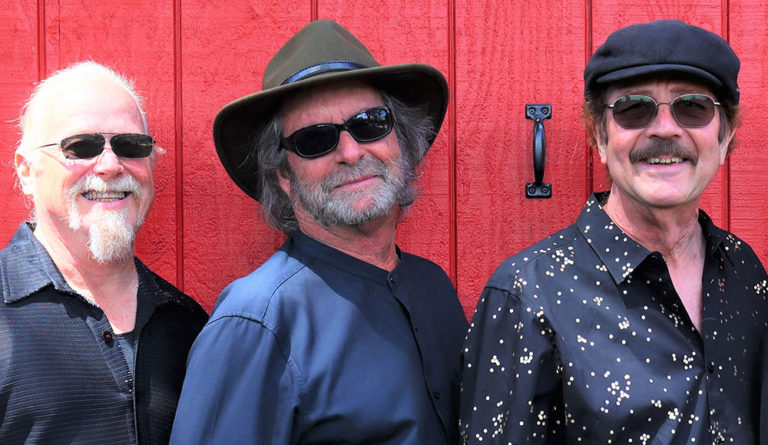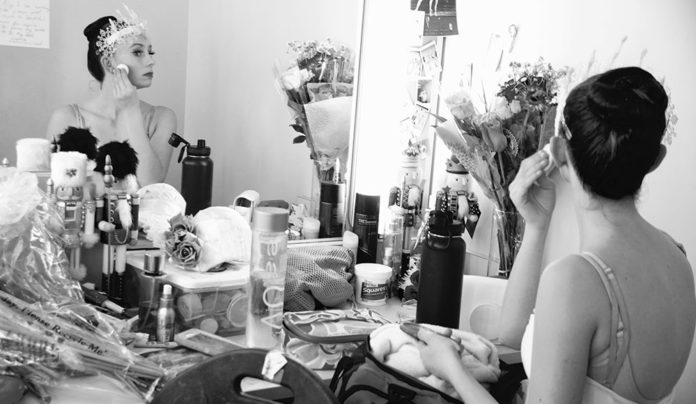Each year around Christmas, hundreds of dance companies across the world put on Tchaikovsky’s Nutcracker, giving young dancers and community members a chance to gather and share in its whimsical holiday magic.
Whether it’s Tchaikovsky’s music, the ever-changing choreography or simply going out to the theater with your family, this holiday tradition has something for everyone.
At the International Academy of Dance, the Nutcracker is more than a holiday production. It’s a masterclass in education, discipline and professionalism; teaching dancers young and old how to work, have fun and build community through long rehearsals, sacrifice and the joy of performance.
For IAD’s youngest teachers, Ally Dunn and Shayla Hill, the Santa Cruz City Ballet production has been a constant in their lives.
“I started at around 7 years old as a lamb and a little angel. As I got older, I realized how important the show is for the community, and the bigger roles feel amazing. Snow always gets a huge reaction. Every year the show changes, new costumes, new choreography. It’s fun seeing it evolve,” Dunn says.
Some of the lessons that have stuck with Hill are those surrounding discipline and inner strength; learning to balance dance, life and work, and going through the world with kindness and grace.
One of the biggest days during Nutcracker season for these two lifelong friends included working the downtown Santa Cruz Christmas parade in the morning, running rehearsals through the afternoon, and then sitting down for this interview.
“When I’m at the studio, I focus on the studio. When I’m at school, I focus on school. In my downtime, I schedule everything out; an hour for rehearsal work, an hour for schoolwork. It’s definitely a skill I’ve had to learn. This year has been one of my most challenging; transferring schools, commuting for Nutcracker, doing upper-division classes, and working another job. But I wouldn’t change it. I wouldn’t miss the Nutcracker.”
As a mentor now, Dunn urges young dancers to stay present in the experience and continue to take the lessons with them as they go into a performance in front of hundreds of people at Cabrillo’s Crocker Theater.
“Enjoy it while it’s happening because it goes by so fast. Be mindful. Give yourself credit. Going onstage in front of hundreds of people is not easy, no matter your age.”
For Dunn, the moments of recognizing how far she’s come—seeing herself reflected in the eyes of the kids—bring her the most joy as a mentor and teacher. She knows exactly what it was like in their little shoes only a few years ago.
“My favorite part now is being backstage and seeing how excited the little kids are. It’s a full-circle moment of thinking, ‘That was me,’ and now I’m the person they look up to.”
Co-directors Vicki Bergland and Shannon Chipman feel that watching Dunn and Hill grow has been an extremely rewarding arc of their careers. “It’s amazing that something they started out with as young children is something they still cherish today, and it’s been incredible to see how they have grown as young women over almost two decades and have become role models for the next generation.”
This year, Dunn will be dancing in the roles of Spanish Chocolate, Snow and Waltz, as well as working behind the scenes supporting dancers onstage and off. She has rehearsed the Queen’s Rats, Petite Rats and the Fight Scene, in addition to Mini Mice, Dolls and Spanish Chocolate.
Hill will be reprising her role as Archangel and will be in charge of the “Big Room” backstage, where all of the youngest dancers share the excitement of Nutcracker, including “Ballet Buddies,” where older dancers are paired with younger dancers to support and encourage one another. She also has been rehearsing Reindeer, Marzipan (Lambs) and Petite Tea.
Additional rehearsal assistants include Bergland, Chipman and Hope Jamieson. “It is wonderful to have such an amazing team that is so capable and talented,” Chipman adds. “We are delighted that dancers from ages 4 to 72 grace the stage in our Nutcracker each year. It is truly an honor to be a part of each dancer’s unique journey and witness their tremendous growth through the years. It truly feels like magic.”
Santa Cruz City Ballet performs its ‘Nutcracker’ at 1 and 4:30pm on Dec. 20–21 at Cabrillo College’s Crocker Theater. Tickets: NutcrackerSantaCruz.com.
























